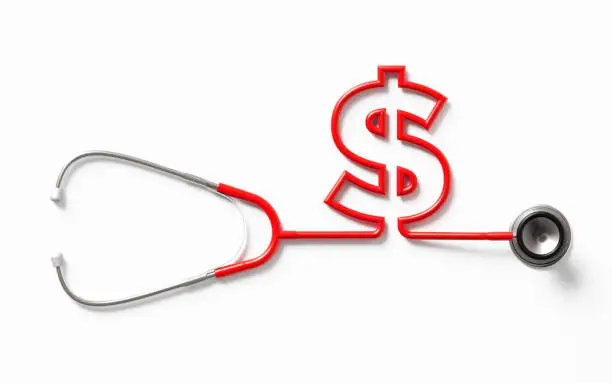We envision a world where everyone has the tools and knowledge to live a balanced, healthy, and fulfilling life. By providing reliable resources, personalized programs, and community support, we aim to be a beacon of hope for those on their health journey.
Table of Contents
Introduction to Unhealthy Habits and Budgeting
Save More Money &health
Unhealthy habits have become a pervasive aspect of modern society, subtly infiltrating our daily routines and often going unnoticed. These habits can range from poor dietary choices and physical inactivity to excessive alcohol consumption and smoking. Over time, these behaviors can become ingrained in our lifestyles, creating a cycle that is challenging to break. While the health repercussions of these habits are often well-documented, their financial ramifications merit equal attention, particularly in the context of budgeting and overall financial health.
The connection between unhealthy habits and financial burden is frequently overlooked. Individuals may not realize that their daily choices, such as dining out frequently, purchasing unhealthy foods, or spending on tobacco and alcohol, contribute to a significant drain on their finances. This financial aspect is crucial to understanding the hidden costs associated with these habits. For instance, the cumulative expenses of convenience foods and fast food can quickly eclipse the costs of preparing nutritious meals at home. Moreover, the long-term health-related costs, such as medical treatments for chronic diseases triggered by these habits, can escalate significantly, affecting not only personal finances but also healthcare systems as a whole.
Establishing a cohesive budgeting strategy that encompasses the impact of unhealthy habits can play a vital role in fostering a balanced lifestyle. By recognizing the financial implications of these behaviors, individuals can make informed decisions about their spending and health. This awareness is essential in mitigating unnecessary expenses while enhancing overall wellbeing. Furthermore, engaging in mindful budgeting allows individuals to allocate resources toward healthier options, ultimately leading to improved physical and financial health. As we delve deeper into this subject, it becomes increasingly clear that addressing unhealthy habits effectively involves not just a focus on health but also a conscientious approach to managing one’s budget.
Understanding Unhealthy Habits

Unhealthy habits are behaviors that negatively affect an individual’s physical, mental, or financial well-being. Common examples include poor eating choices, lack of exercise, smoking, excessive drinking, and procrastination. These habits often develop gradually, driven by a combination of factors such as lifestyle, environment, and psychological triggers. For instance, busy schedules can lead to convenience eating—favoring processed foods over nutritious options—which in turn reinforces unhealthy dietary choices.
Additionally, the impact of sedentary lifestyles cannot be understated. With the proliferation of technology, many find themselves spending extended periods engaged in screen time, thereby neglecting physical activity. This not only poses health risks but also contributes to financial burdens, as medical expenses for chronic conditions increase over time. The struggle to incorporate exercise into daily life is compounded by the temptation of immediate gratification, often found in fast food or embedded in entertainment options.
Smoking and excessive drinking are other prevalent unhealthy habits that often stem from social influences or stress relief. The initial allure may provide a temporary escape, but the long-term consequences are severe, both health-wise and financially. Intervention programs may provide strategies for breaking free from these habits, yet, the existence of underlying psychological or emotional conditions can create barriers toward change.
Procrastination, while less visible than other habits, can lead to significant stress and hinder productivity. It often originates from fear of failure or perfectionism, ultimately impacting one’s ability to manage both personal and financial responsibilities effectively. Understanding these habits is crucial as they intertwine not only with individual health outcomes but also with personal finance. The costs associated with treating health issues, managing stress, and the loss of productivity can accumulate significantly, emphasizing the importance of addressing unhealthy behaviors early on.
Direct Financial Impacts of Unhealthy Habits
Unhealthy habits can significantly strain an individual’s financial resources, manifesting in various ways. One of the most apparent direct costs is the frequent consumption of fast food and junk food. According to the U.S. Department of Agriculture, the average American spends approximately $1,200 annually on fast food alone. This amount can escalate when considering the additional costs associated with unhealthy snacks and convenience food options, which often provide little nutritional value, thus increasing the need for further purchases to maintain a balanced diet.
Moreover, the financial implications extend beyond merely purchasing unhealthy food. Research indicates that individuals consuming a diet high in processed foods are at an increased risk for chronic conditions such as obesity, diabetes, and heart disease. The Centers for Disease Control and Prevention (CDC) estimates that medical expenses for individuals with chronic diseases are 5.5 times higher than for those without. Consequently, these health issues lead to higher out-of-pocket costs for healthcare and medications, further burdening the budget of those with unhealthy eating habits.
Another direct cost is associated with the use of tobacco products. The American Lung Association states that the typical smoker spends approximately $2,000 annually on cigarettes. This figure does not account for additional healthcare expenses arising from smoking-related illnesses, which can result in increased insurance premiums as well. Furthermore, sick days and potential loss of income due to smoking-related illnesses can exacerbate the financial strain, leading to decreased financial stability.
In essence, unhealthy habits create a ripple effect on finances, demonstrating the interconnectedness of lifestyle choices and economic impact. The cumulative costs of unhealthy eating, smoking, and related health issues serve as a stark reminder of how seemingly small decisions can lead to significant financial burdens.
Indirect Financial Impacts of Unhealthy Habits

Unhealthy habits often carry costs that extend far beyond immediate financial expenditures. One of the most significant indirect financial impacts is reduced productivity in the workplace. When individuals engage in unhealthy behaviors—such as poor dietary choices, lack of physical activity, or substance use—their overall energy levels, focus, and efficiency are often compromised. This decline in performance can lead to decreased output, errors in work tasks, and a noticeable impact on team dynamics. Employers may recognize these changes, which can result in diminished opportunities for promotions or pay raises, ultimately affecting the employee’s financial stability.
Furthermore, unhealthy habits can lead to increased absenteeism at work. Chronic illnesses such as heart disease, diabetes, and respiratory issues, often associated with poor lifestyle choices, require frequent medical attention and recovery time. Each day an employee misses work translates to lost wages, while the employer grapples with the financial burden of employee replacement and decreased morale among remaining staff members. In severe cases, consistent absenteeism may even trigger a review of the employee’s performance, jeopardizing job security.
The long-term economic ramifications of chronic diseases rooted in unhealthy habits are substantial. Medical expenses for treating these conditions can skyrocket, impacting not only individual finances but also healthcare systems at large. Furthermore, individuals suffering from poor health conditions may find themselves unable to maintain stable employment, leading to potential job loss. The intersection of health and work performance plays a crucial role in the overall financial landscape. Consequently, mitigating unhealthy habits can foster both personal well-being and greater financial security, demonstrating the importance of addressing these issues holistically.
Psychological Effects of Unhealthy Habits on Spending
Unhea-lthy habits can lead to significant psychological distress, which in turn may adversely influence spending behaviors. Individuals often seek comfort in their expenditures when facing stress, anxiety, or low self-esteem, creating a detrimental cycle of unhealthy choices and financial instability. This phenomenon is commonly observed in individuals who turn to compulsive buying as a coping mechanism for underlying emotional issues.
Stress is a common trigger for unhea-lthy habits, which can manifest in various forms, including overeating, substance abuse, or poor time management. These habits contribute to increased levels of anxiety, prompting individuals to seek instant gratification through retail therapy. Research indicates that this type of spending can offer temporary relief, but it frequently results in long-term regret and financial strain. Individuals might feel compelled to make impulsive purchases, leading to credit card debt and financial disarray.
Similarly, low self-esteem may drive individuals to engage in unhea-lthy habits and correlate these behaviors with their self-worth. The need to compensate for negative feelings can lead to extravagant spending on luxury goods or services perceived to enhance one’s status. Unfortunately, these choices further exacerbate feelings of inadequacy and disillusionment when the satisfaction derived from these purchases fades.
Compulsive buying can act as a psychological loop where unhea-lthy habits stimulate a temporary emotional lift, followed by negative consequences such as guilt and financial setbacks. This cycle can become entrenched, causing individuals to feel trapped and unable to break free from the direct link between their psychological state and their financial hea-lth. In understanding these psychological impacts, it becomes apparent that addressing unhea-lthy habits is essential not only for physical well-being but also for maintaining a sustainable budget.
The Role of Financial Awareness in Breaking Unhealthy Habits

Financial awareness serves as a pivotal element in addressing and mitigating unhea-lthy habits. Richer and Healthier The Surprising Link Between Wellness and Wealth; Understanding the monetary implications of these behaviors not only fosters accountability but also empowers individuals to make informed decisions about their hea-lth and finances. Many people may not realize how detrimental unhea-lthy habits can be to their budgets. For instance, frequent dining out, purchasing junk food, or even smoking can accumulate significant costs over time. By cultivating financial awareness, individuals can begin to view their spending behaviors through the lens of their overall hea-lth and well-being.
One practical tool to enhance financial awareness is a budgeting app or spreadsheet dedicated to tracking expenditures associated with unhealthy habits. By categorizing spending on food, alcohol, tobacco, or other detrimental behaviors, individuals can visualize how these habits impact their financial hea-lth. This method encourages reflection and critical evaluation of where money is being spent. Tracking expenditures over a month or longer allows individuals to establish patterns and identify areas where they might be overspending, prompting a consideration of lifestyle changes.
Moreover, setting financial goals can significantly influence one’s ability to break free from unhea-lthy habits. By associating financial objectives, such as saving for a vacation or emergency fund, with hea-lthier lifestyle choices, individuals are likelier to make decisions that benefit both their hea-lth and finances. The journey towards improved hea-lth benefits from recognizing how much financial resources are wasted on unhea-lthy habits. Ultimately, fostering a mindset of financial awareness can contribute to better decision-making, enabling those who recognize the costs associated with unhea-lthy behaviors to take steps toward change. By understanding that every dollar spent represents a choice, individuals can empower themselves to pursue hea-lthier habits that align with their financial goals.
Creating a Healthier Budget to Improve Overall Well-Being
To foster better hea-lth through financial planning, it is paramount to create a budget that accommodates healthier habits. This endeavor engages individuals to think critically about their spending patterns while prioritizing wellness-related expenditures. Effective budget management can lead to tangible improvements in both physical hea-lth and financial stability.
One actionable strategy is to implement thorough meal planning. By dedicating time each week to plan meals, individuals can reduce food wastage and lower grocery bills while ensuring a nutritious diet. Preparing meals at home rather than dining out not only creates a budget-friendly option but also promotes heal-thier eating choices. Additionally, purchasing seasonal produce or bulk items can further enhance savings while ensuring a balanced intake of essential nutrients.
Incorporating physical fitness into daily life is another aspect of a heal-thier budget. Finding budget-friendly options such as local parks for outdoor activities or taking advantage of community fitness classes can minimize costs. Many neighborhoods offer free or low-cost exercise opportunities, encouraging regular physical activity without the burden of expensive gym memberships. Moreover, mindfulness in daily commutes can also lead to heal-thier habits; cycling or walking instead of driving can be both economically advantageous and beneficial for physical well-being.
Furthermore, allocating a portion of the budget towards wellness investments can establish a proactive approach to hea-lth. This could include purchasing hea-lth supplements, ergonomic furniture, or even wellness apps that promote healthier lifestyles. These small but significant investments can yield substantial returns on overall well-being. By comprehensively aligning budget planning with hea-lthier lifestyle choices, individuals can better support their financial goals and cultivate a thriving, hea-lth-conscious life.
Success Stories: Transforming Bad Habits into Good Financial Practices
Many individuals have successfully navigated their way from unhealthy habits to improved financial well-being, serving as inspiring examples for others facing similar challenges. One notable case is that of Sarah, a 32-year-old professional who struggled with impulse buying and a lack of budgeting skills. Recognizing the impact of her spending habits on her finances, Sarah embarked on a journey to transform her lifestyle. She began by creating a detailed monthly budget that highlighted her essential expenses and allowed for discretionary spending. By reviewing her financial situation regularly, she became more mindful of her spending choices. Within a year, Sarah reported a 30% reduction in her monthly expenses, allowing her to save for a long-desired vacation.
Another remarkable story is that of James, a former fast-food enthusiast who realized that his unheal-thy eating habits not only affected his hea-lth but also drained his finances. With determination, James swapped processed foods and take-out meals for home-cooked, nutritious options. He educated himself on meal planning and the cost-effectiveness of purchasing fresh ingredients in bulk. By doing so, James not only improved his hea-lth but also saved approximately $250 each month, which he redirected towards his savings for homeownership. This change, prompted by his desire for a heal-thier lifestyle, illustrated how altering one habit could yield significant financial benefits.
These success stories underscore the transformative power of prioritizing good habits over unhealthy practices. As individuals acknowledge the costs associated with their detrimental behaviors, they are motivated to make conscious changes. Budgeting, meal planning, and reducing impulse purchases are just a few steps that lead to a heal-thier lifestyle and a more sustainable financial future. Through real-life examples, it becomes evident that improving one’s habits has the potential to foster not only better physical hea-lth but also enhanced financial stability and peace of mind.
Conclusion: The Path to Financial and Physical Health
Understanding the implications of unhea-lthy habits extends beyond personal wellness; it has significant ramifications on one’s budget as well. Throughout this discussion, we have explored various dimensions of unhealthy behaviors—from poor dietary choices to lack of exercise—and their correlation with increased financial expenditures. Whether it’s the cost of fast food, frequent medical bills due to lifestyle-induced hea-lth issues, or missed days of work due to illness, the financial burden of unhealthy habits can be substantial.
Moreover, it is imperative to consider the long-term effects these habits may have. Investing in heal-thy habits—be it through proper nutrition, regular exercise, or preventative healthcare—can lead to considerable savings. These savings stem not only from reduced medical expenses but also from enhanced productivity and overall quality of life. Consequently, the path to financial well-being is intricately linked to one’s commitment to adopting a hea-lthier lifestyle.
This call to action invites readers to engage in a thoughtful assessment of their current habits. By identifying at least one area for improvement, individuals can initiate a change that fosters both hea-lth and economic stability. It could be as simple as preparing home-cooked meals instead of relying on take-outs, or committing to regular physical activity that may eliminate the need for chronic prescriptions. Evaluate your spending patterns and their connection to your lifestyle choices, as this will empower you to make informed decisions that benefit both your hea-lth and your finances.
Ultimately, successful management of your budget requires not only a careful evaluation of financial choices but also an ongoing commitment to nurturing a hea-lthier life. By intertwining the pursuit of physical hea-lth with financial responsibility, one can pave the way toward achieving both long-term wellness and fiscal integrity.




